Architectural Covers: A Site of Design
The following text is an excerpt from the guide that accompanied the exhibition ‘PRINT READY DRAWINGS: Composites, Layers, and Paste-ups, 1950-1989’, installed at the MAK Center for Art and Architecture in Los Angeles between 11 November 2023 – 4 February 2024, and curated by Sarah Hearne.
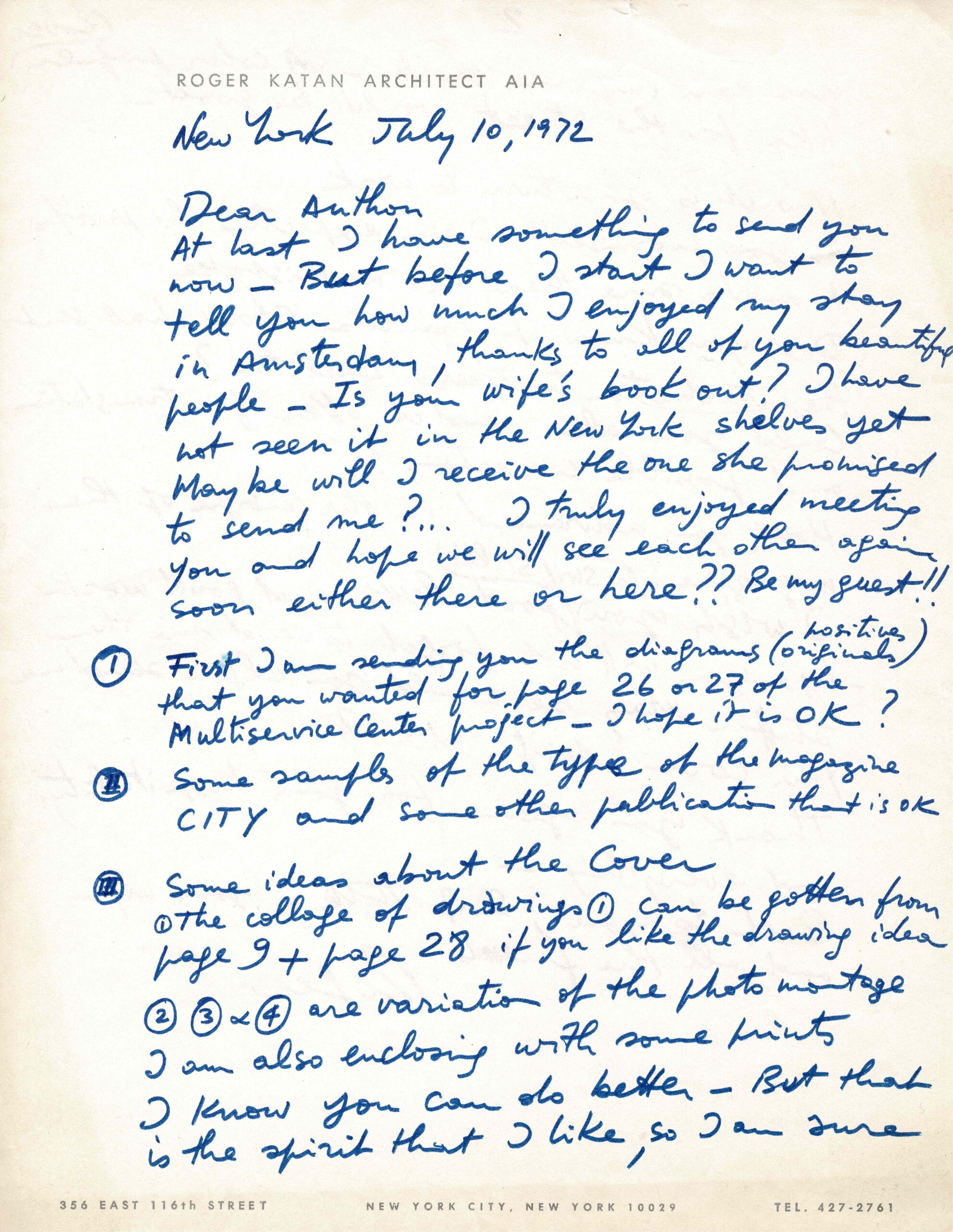
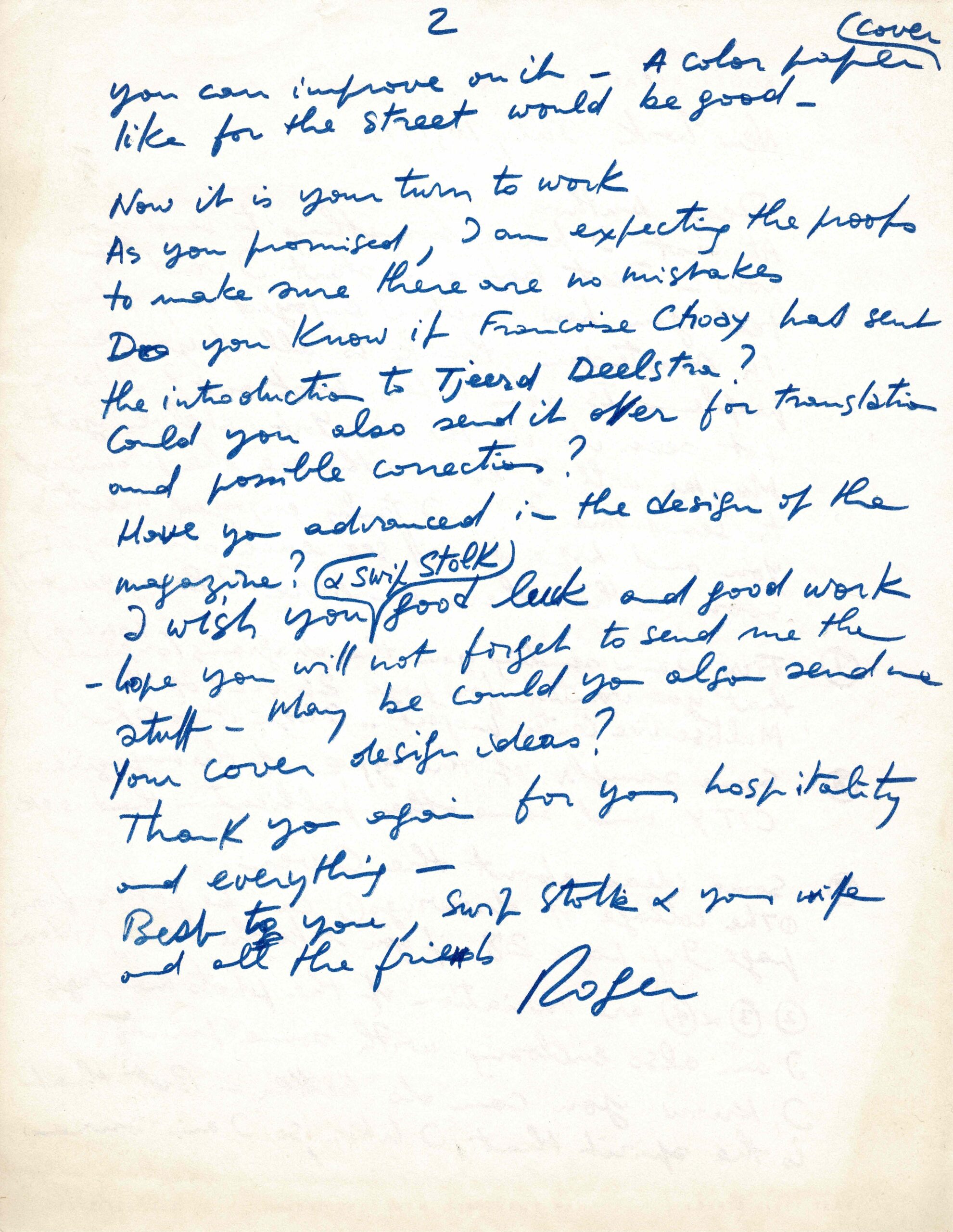
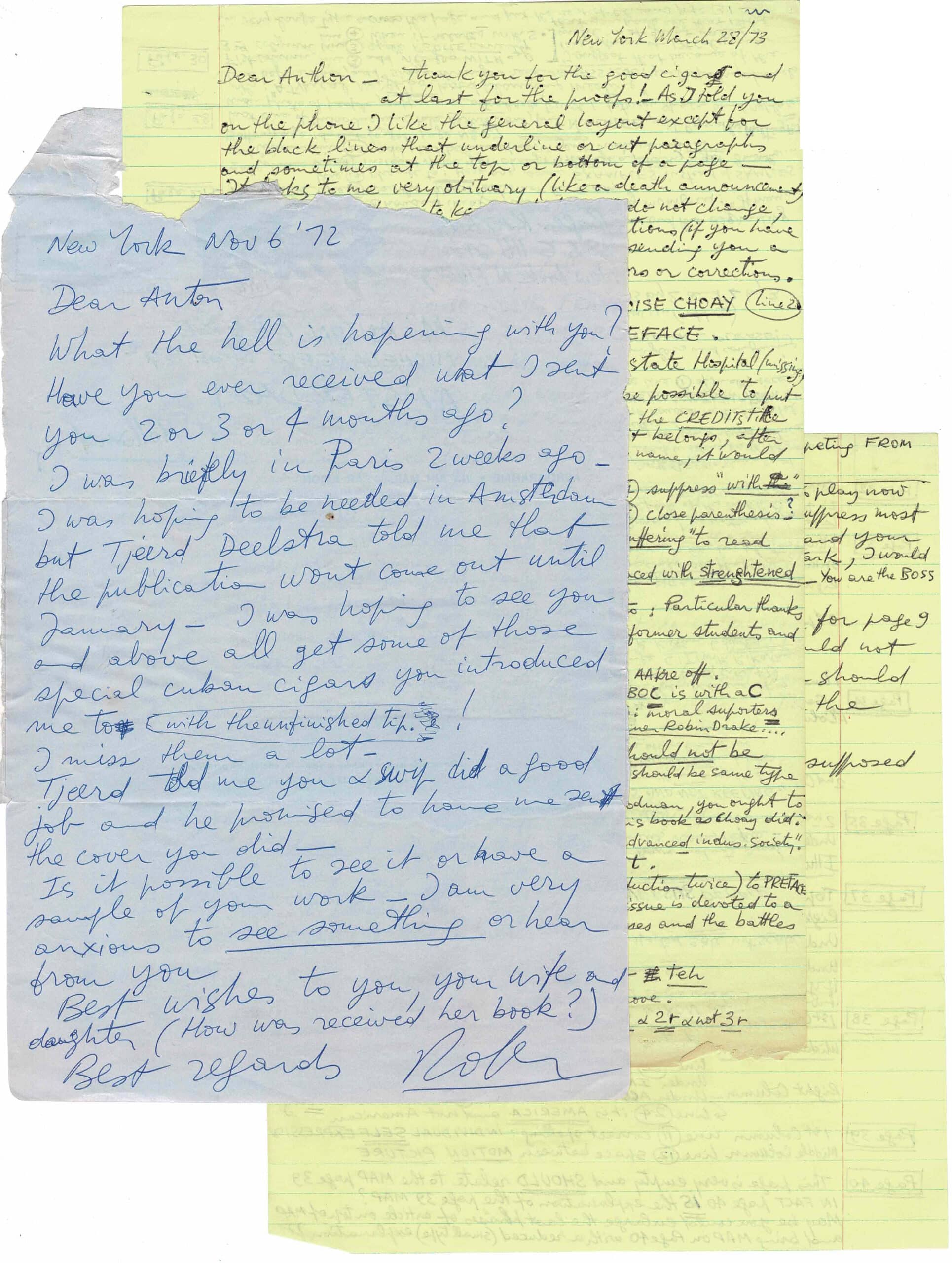
Between 1971 and 1973, architect Roger Katan corresponded with Anthon Beeke, a graphic designer and then-editor of Dutch architecture journal Forum voor Architectuur en Daarmee Verbonden Kunsten. Katan had relocated from Philadelphia to East Harlem, New York in early 1964 at the invitation of a board member for La Guardia Memorial House, a 19th-century settlement house and community centre for newly arrived immigrants on East 116th Street. In lieu of payment, Katan was given an office and living space where he would redesign the adjacent Corsi House project for public housing and a community centre funded by the NYC Housing Authority. He described this office as a ‘kind of commune where students lived and worked.’[1] This description and the insistence on participatory production was as much a critique of a modernist model of architectural and planning paternalism, which he linked to an administrative model of production: ‘government programs have promoted a bureaucracy of a new type of establishment folk with five-foot desks, secretaries and copy machines to run proposals for special projects that will never materialize. That keeps them off the streets, and busy!’[2] As an alternative to this model, Katan’s approach reflected a broader repositioning of urban renewal and participatory planning processes of the 1970s, which made architects into embedded facilitators or intermediaries, advising neighbourhoods, and advocating for self-determinism.[3] These projects often used appeals to the community as a cover for gentrification, by upholding the structures around funding and governance.[4] In East Harlem, Katan’s address to the community included the aesthetics of informal media formats such as leaflets and flyers. Within the neighbourhood, the accumulation of printed matter allowed for public messaging around social engagements, such as local summer festivals, but also of resistance and protest. More than just the demolition and reconstruction of buildings, the stacks of paper that scattered as flyers, posters, newspapers, and letters are an important factor in this material layer of gentrification.
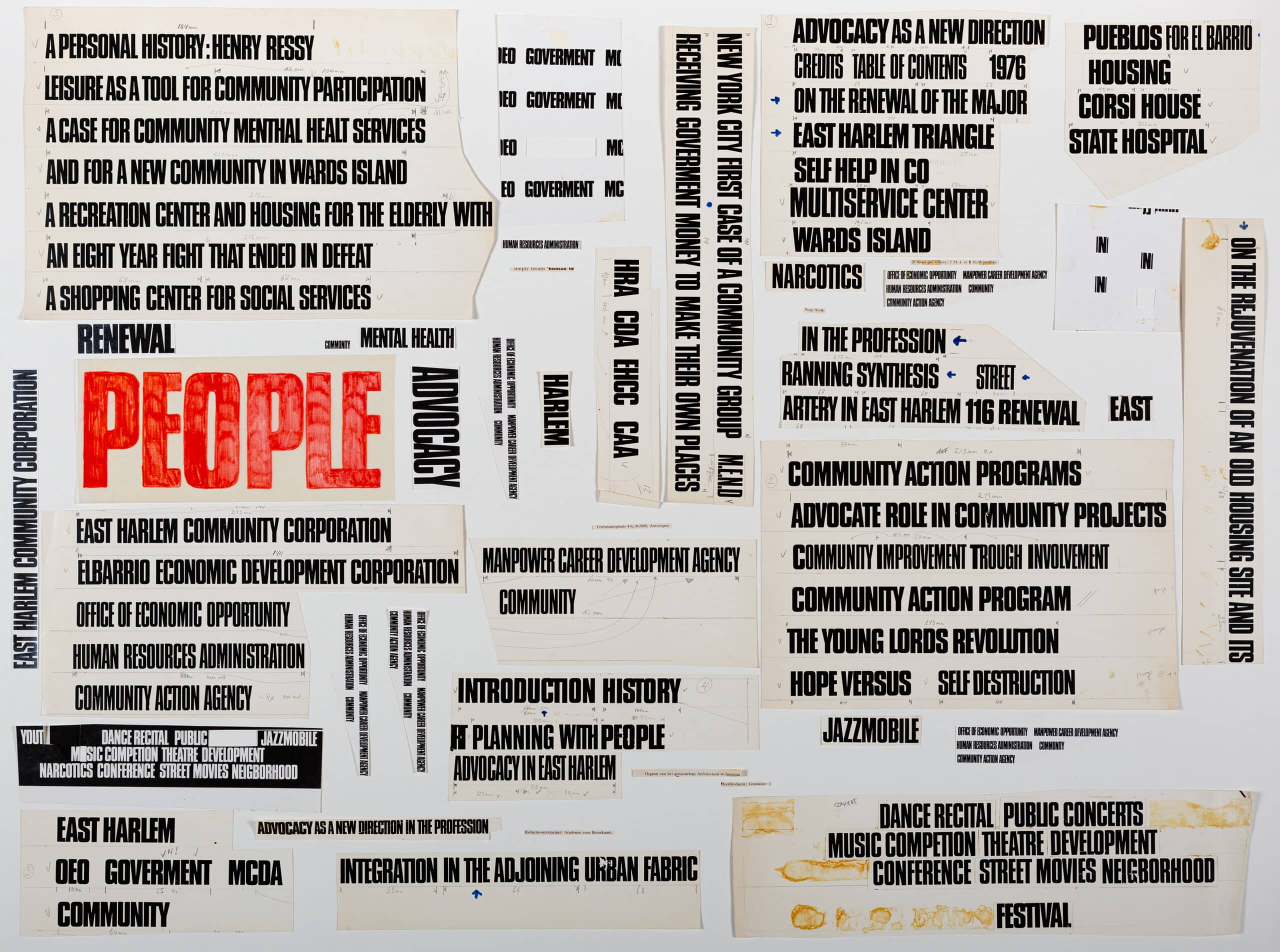
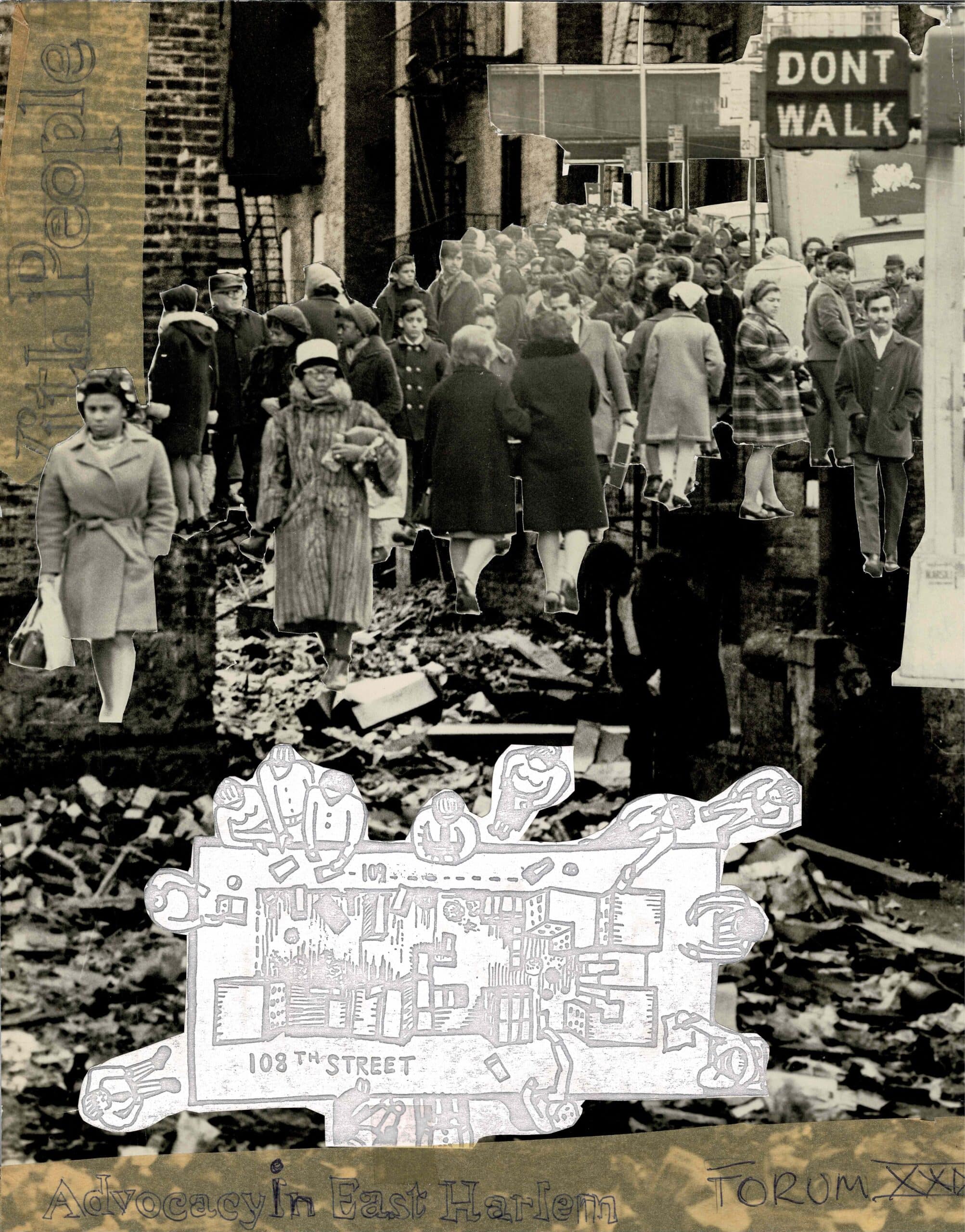
The one-sided correspondence from Katan to Beeke includes letters with corrections, taped and liquid-papered collages, loose lettering samples, and graphite-sketched layouts. The papers are blues, teals, and yellows, suggesting the signifying spectrums of administrative paper systems in this period. They reveal a divergence between the designers related to the emphasis between text and image. Katan proposed a mock-up for the cover in an early letter, with a collaged photograph of a crowd, and on it strips of overlaid masking tape as a crude form of hand-written lettering transfer. He lamented the proof that was returned to him by the Dutch team, composed of unadorned lettering without a photographic background populated with people, which Katan felt was too stark and dry. Considered against the earlier quote by Katan, which positions the copy machine as central to bureaucratic activities, these magazine materials portray a language that enfolds photographic collages with people, workshops, and activities, emphasizing the promise of lively forms of collaborative engagement. These attest to his desires to decentralize the role of government and establish systems of self-determination from the grassroots level. Paradoxically the copy machine and other smaller technologies of office-based printing were one of the crucial ways that East Harlem communities were already organizing their grassroots political activities. For instance, in the pages of Forum, Katan featured The Young Lords Organization, an East Harlem wing of the Chicago-based advocacy group for the liberation of Puerto Rico. The Young Lords were active within the immediate neighbourhood and printed a regular newspaper Palante, utilizing local volunteers to help with the paste-up activities. The group activated image-making as a form of protest, organizing flyer and poster workshops, and perhaps most famously in their occupying and relocating of a mobile X-ray machine owned by the City Health Department, recruiting its technicians to image people in the underserved community as part of a series of efforts to make visible and redistribute collective infrastructures related to health and sanitation to the neighbourhood.
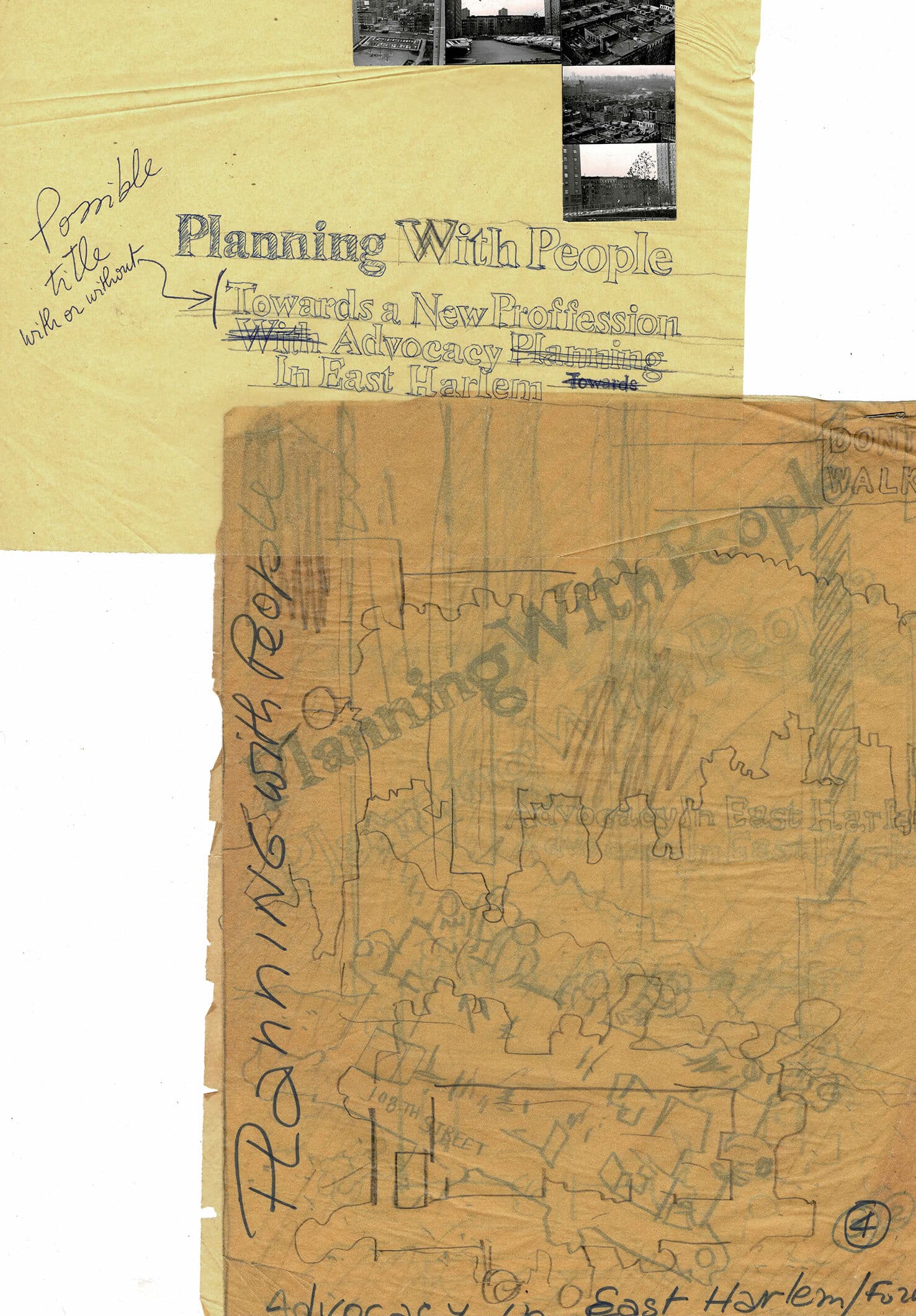
Notes
- Alongside this work, Katan taught at Pratt University beginning in 1963. See Roger Katan, ‘Corsi House’ in Forum voor Architectuur en Daarmee Verbonden Kunsten, Vol. 23 (1972), 26.
- Roger Katan, ‘History of the Community’ in Forum, 8.
- For a broader discussion of this period of participatory planning in the U.S., see Rebecca Choi, ‘Soul and T-Square’ in Journal of Architectural Education, Vol. 77, Issue 1: Reparations (2023), 28-33.
- Brian D. Goldstein, ‘Reforming Renewal’ in The Roots of Urban Renaissance: Gentrification and the Struggle over Harlem (Massachusetts: Harvard University Press, 2017), 16-56.
Sarah Hearne is an architectural historian, educator, and curator. She received her PhD in Architectural History at the University of California Los Angeles in 2020 with her dissertation ‘Other Things Visible on Paper: Architectural Writing and Imaging Craftsmanship 1960-87’.
‘Print Ready Drawings’ is curated by Sarah Hearne, with curatorial assistance by Arianna Borromeo, Lauren Akira Verdine, and support from the MAK Center exhibitions team Seymour Polatin, Exhibitions and Programs Manager and Brian Taylor, Curatorial Assistant. The exhibition features commissioned films by Julie Riley and Jenny Leavitt. Exhibition design is by Current Interests with conservation support from Paradise Framing. Graphic design is by Christina Huang. ‘Print Ready Drawings’ was made possible, in part, with generous support from the Getty Foundation’s Paper Project Series. Additional support was provided by the Graham Foundation for Advanced Studies in the Fine Arts and the University of Colorado Denver, College of Architecture and Planning.
